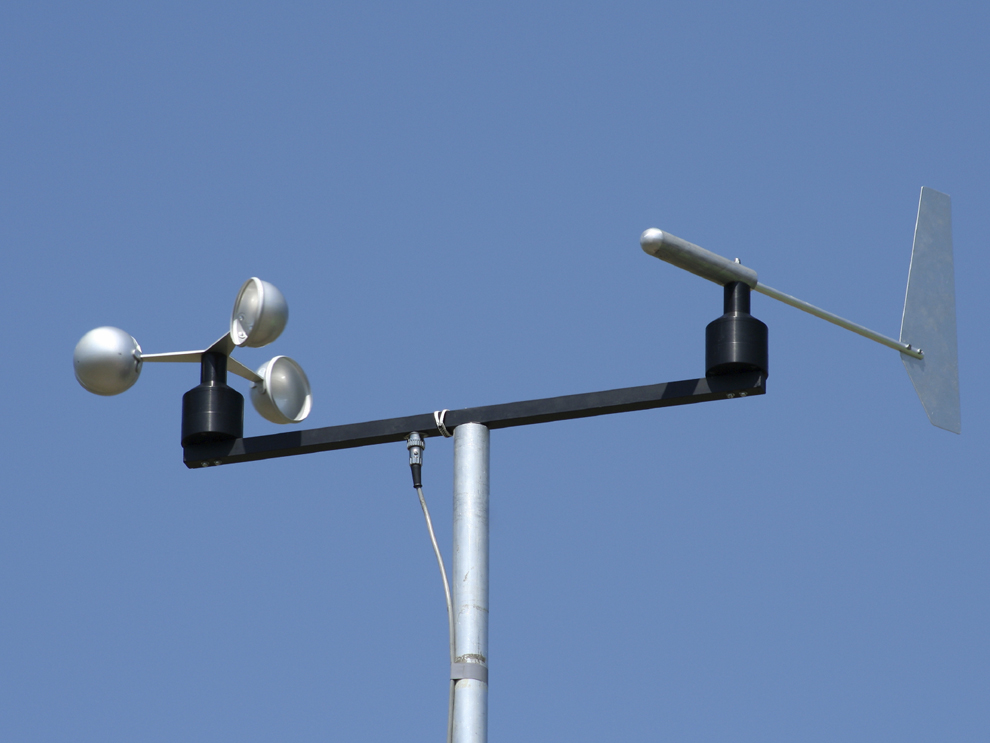Comparing Digital and Mechanical Anemometers: Which is Right for You?
Comparing Digital and Mechanical Anemometers: Which is Right for You?
Blog Article
Anemometers Revealed: Comprehending Their Relevance in Ecological Tracking and Precaution
The function of anemometers in ecological tracking and safety steps is usually undervalued, yet their value is undeniable. From weather forecasting to air travel security, anemometers play an important role in supplying exact information that educates decision-making procedures and enhances total safety and security.
Background of Anemometers
The advancement of anemometers can be mapped back to the old human beings where basic wind measuring gadgets were initial used. These early wind dimension devices laid the structure for the growth of much more sophisticated anemometers with time. One of the earliest well-known anemometers was the hemispherical cup anemometer invented by Leon Battista Alberti in the 15th century. This style included four hemispherical cups that collected wind energy, giving a measurement of its intensity based on the speed of turning.
In the 18th century, the distinguished researcher John Thomas Romney Robinson presented the Robinson anemometer, which featured four hemispherical cups installed on straight arms that expanded from a main axis. This layout became a standard in meteorological measurements because of its accuracy and dependability. For many years, advancements in technology resulted in the development of more contemporary anemometers, including ultrasonic anemometers and laser Doppler anemometers, using boosted accuracy and effectiveness in determining wind speed and instructions. The background of anemometers showcases an impressive journey of technology and progression in the area of weather forecasting.
Sorts Of Anemometers
Throughout the area of weather forecasting, different kinds of anemometers have been created to accurately measure wind speed and direction. Sonic anemometers utilize ultrasonic signals to measure wind rate and direction properly. Hot-wire anemometers run based on the principle that the cooling result of wind on a warmed cable is symmetrical to the wind speed.
Applications in Weather Forecasting
Having talked about the different kinds of anemometers used in weather forecasting for measuring wind speed and direction, it is necessary to discover their sensible applications in the field. Anemometers play a critical duty in weather forecasting by providing real-time and precise data on wind conditions (anemometer). Meteorologists make use of anemometers to monitor wind rate and instructions to anticipate climate patterns, concern warnings for extreme climate occasions like twisters, storms, and storms, and assess climatic conditions for aeronautics safety and security
In weather forecasting, anemometers assist in comprehending local and regional wind patterns, which are crucial for anticipating climate changes and determining weather patterns. These devices are additionally used in research to research microclimates, metropolitan heat islands, and air contamination dispersion. Furthermore, anemometers are employed in farming to enhance plant monitoring practices, such as watering and chemical application, based on wind problems.
Significance in Air Travel Security
An essential facet of guaranteeing air travel security lies in the meticulous surveillance of wind conditions utilizing anemometers. Anemometers play an important role in aeronautics by offering real-time information on wind find more info speed and instructions, assisting pilots in making educated choices during landing, take-off, and trip. Unpredictable and solid winds can substantially influence aircraft operations, making it essential for aviation authorities to count on accurate wind measurements to make certain the security of guests and crew.

In the dynamic atmosphere of aviation, where even small modifications in wind speed and direction can have extensive effects, anemometers stand as important devices for advertising risk-free and safe air travel.
Duty in Environmental Research
Anemometers play a critical function in ecological study by giving crucial data on wind speed and direction. By precisely measuring wind characteristics, anemometers assist scientists evaluate the movement of pollutants in the air, examine the effect of industrial discharges, and forecast the spread of contaminants in the atmosphere.


Final Thought
To conclude, anemometers have played an essential role in ecological surveillance and safety and security measures. With a rich history and various kinds readily available, these devices have actually been widely made use of in weather forecasting, air travel safety and security, and environmental research. Understanding the value of anemometers is crucial for properly determining wind speed and direction, which is vital for predicting climate patterns, guaranteeing risk-free aviation procedures, and carrying out environmental researches - anemometer. Their payments to these fields can not be ignored.
One of the earliest known anemometers was the hemispherical cup anemometer invented by Leon Battista Alberti in the 15th century. Over the years, innovations in modern technology led to the growth of more contemporary anemometers, consisting of ultrasonic anemometers and laser Doppler anemometers, providing boosted precision and effectiveness in gauging wind speed and direction. Hot-wire anemometers run based on the concept that the cooling effect of wind on a heated cord is symmetrical to the wind rate. Meteorologists utilize anemometers to keep an eye on wind speed and direction to forecast climate patterns, concern warnings for severe weather condition occasions like tornadoes, typhoons, and storms, find out here and analyze atmospheric conditions for aviation safety and security.
Recognizing the significance of anemometers is crucial for properly measuring wind rate and direction, which is vital for forecasting climate patterns, guaranteeing secure aeronautics procedures, and performing ecological research studies. (anemometer)
Report this page